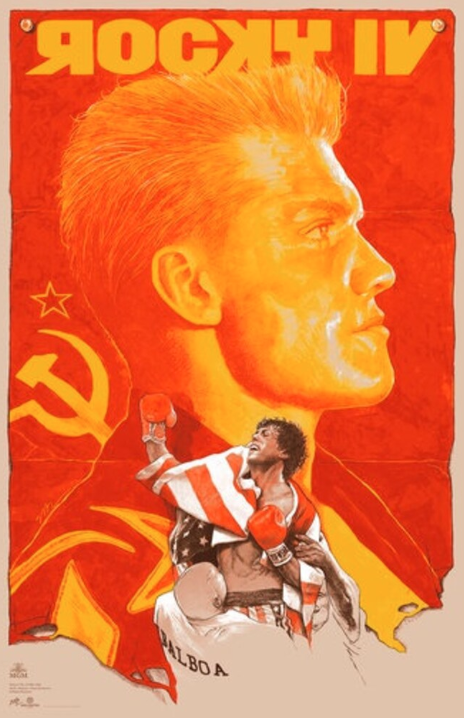The Cold War: Brand vs. Performance
I used to run US marketing for a global ecommerce marketplace. Being that I cut my teeth on performance marketing, I thought brand marketing was evil. I was fighting the Cold War: brand marketing was Ivan Drago and performance marketing was Rocky Balboa. The Soviets were the bad guys, and the performance marketers were going to save the world from the communist brand bloc. The stakes were high, as one year, the brand team rallied the company behind a major brand investment that included the company’s first TV commercial and a massive branding facelift. It was a multi-million dollar investment and a huge bet on the company’s future.
I hated it.
I rooted against it.
I politicized it.
When the commercial failed and we lit millions of dollars on fire, I celebrated it. Maybe I wanted to watch the world burn. Or maybe I felt validated that I had the “right” view on marketing. Or maybe I liked having a bit more job security.
Years later, when I ran marketing at another ecommerce marketplace, I came face to face with brand marketing again. Only this time, my view of brand marketing changed. I realized it wasn’t brand vs. performance. It wasn’t demand generation vs. demand capture. It wasn’t top of funnel vs. bottom of funnel. Rather, it was customer acquisition vs. customer retention: both had to be present in order for the company to survive and scale.
My 2+ year journey building a brand at TeePublic taught me that a brand performance measurement system can be built, and that brand marketing can be measured. Armed with a holistic measurement system, you can:
benchmark your existing brand equity and its impact on customer retention
measure KPIs related to customer retention and brand growth success
measure the brand and competitors across all dimensions of brand health
define the methodology and measures the effectiveness for brand advertising
measure long term impact of the brand on the business
aggregate brand performance across Google and Facebook
integrate with your customer retention measurement system
Here’s how.
Strategic Framework
Take a two-prong brand measurement approach. First, work with a brand measurement platform like Kantar or Attest to measure brand equity and growth. Second, work with your Google and Facebook teams to design brand advertising testing methodology as well as a measurement system to track brand advertising effectiveness.
Brand Measurement Platform
Define, track, and influence brand KPIs, including:
spontaneous awareness
aided and unaided awareness
consideration
brand usage
brand loyalty
equity input metrics (trust, recommendation, convenience, flexibility, reliability)
market factors
The goal is to measure brand power, which is the share of predisposition that correlates with sales volume share. A brand measurement platform will help you understand your brand's drivers and how they differ across categories while giving you insights into what in-market barriers you need to overcome and what facilitators you need to leverage. They'll provide granular detail on how brand strategy can build brand equity that translates into revenue growth.
These platforms will continually diagnose brand equity and provide strategic insights through both an acquisition and retention lens. You’ll need to understand brand loyalty from a brand, experience, and behavioral point of view.
identify loyal segments through strength of engagement
understand what matters to them (experience)
unpacking brand engagement (loyalty score, consideration, user interaction)
You’ll be able to run diagnostic tests focusing on your in-market brand creatives and answer questions like:
Is the creative getting noticed in-market?
Is it wearing out?
Is the creative engaging?
Is it building the appropriate associations and predisposition?
Google and Facebook
Scoping partnerships with Google and Facebook to measure brand marketing effectiveness includes the following:
brand advertising measurement consulting (i.e. experimentation, GMP best practices, reporting and analytics, etc.)
hands-on help with Google/Facebook supported experiment methodologies
added bonus: Google/Facebook and your brand measurement platform built-in data connection
The brand advertising methodology (four different statistical approaches):
brand lift
search lift
geo experimentation
causal impact
The brand KPIs to track:
brand search growth vs. competitors
incremental brand search from search lift studies
incremental ROAS or revenue
share of market
The brand testing and post-test scenario planning:
test duration
KPIs
budget
target audience and exclusions
bids
IF the test goes well THEN we do X
IF the test goes poorly THEN we do Y
Brand marketing and performance marketing are not at odds. In fact, they are both vital to your customer acquisition and retention KPIs and must be measured. There is no Cold War anymore.
